Meenakshi Cinetone and Sundaram Sound Studios
Meenakshi Cinetone conducted its operations in the place Dr M.G.R-Janaki College is currently located at Adyar. The site belonged to the Nawab of Arcot. Initially, film director C.V. Raman rented the place and set up a studio that had only one floor. The film Pavalakkodi was shot there and released in 1934. Later, the studio’s name was changed to Sundaram Sound Studios and came to be owned by P.S. Satthappa Chettiar. Initially, none but Satthappa Chettiar’s films were shot in the studio; other projects could not rent the place. The first film to come from Sundaram Sound Studios was Athiroopa Amaravathi (1935) which had C.V. Raman as the director, Sundar Rao Nadkarni as the cinematographer and P.K. Viswanath as the sound recordist.
Sundarabharathi Studio
Sundarabharathi Studio was established in 1935 at Sathuvachari, Vellore by Vajravelu Mudaliar upon his purchase of the equipment from Jayavani Cinetone Studio. It was there that Seshaiah produced a film titled Sati Ahalya, in which R. Balasubramaniam, Mayavaram Pattammal and others acted. The film went unreleased. The studio also had to shut down. A 1936 document makes mention of Seshaiah’s passing away. No further chronological information appears to be available on the subject.
National Movietone
National Movietone was a large studio that function from 71, Poonamallee High Road, Kilpauk since March 1935. It was owned by Devakottai S.P.L.P. Chidambaram Chettiyar. 80 acres of land was purchased at Aminjikarai to facilitate outdoor shoots. Radha Kalyanam was the first film to be shot here, which went onto to be released at the end of 1935.
Initially, Jiten Banerjee was the cinematographer, but he later left. Harikrishnan was the lab-in-charge, Jadhav the sound engineer and T.S. Mani, the art director.
For a time, the studio was leased to R.M. Krishnaswamy, Zaveri alas Navinchand Heerachand Zaveri and Chandubai Vakil and was renamed Praveen Studios. The films Krishnakumar, Manthiravathi and others were shot there during this period.
Where the studio once stood now functions a school called Bhavans Rajaji Vidyashram.
Motion Pictures Productions Combines (MPPC)
A film company called Mahalakshmi Studios, which operated under the aegis of M.S. Ramasamy Chettiar, functioned from Spring Garden, Cathedral Road. It was there that the studio called Motion Pictures Productions Combines (MPPC) was established, on July 26, 1937. It was the first studio set up by a group of film company owners, and was equipped with all the modern facilities of the time, including soundproofing. The studio also had another name – Movie Land.
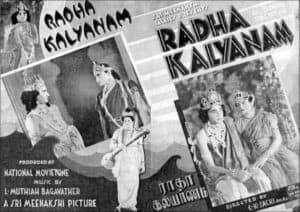
The directors M.S. Ramasamy Chettiar (Mahalakshmi Studios), N.M.R. Venkatakrishna Iyer (Royal Talkie Distributors) and K. Subramanian (Madras United Artist Corporation) took charge. It is to be noted Madras United Artist Corporation was a film production company that was established on September 13, 1935 and its partners were K. Subramaniam and S.D. Subbulakshmi.
Because K. Subramaniam had conducted a shoot in Calcutta, many local technical artists from the East India Film Company were employed in MPPC. The technical artists worked with great enthusiasm and commitment because a share of profits were also given to them. The technical staff included cameraman Sailen Bose, assistant cameramen Kamal Ghosh and Ellappan, sound recordists P.K. Viswanath and Jyotish Sinha, art director K.R. Sarma, make-up artist Haribabu, Dharam Veer from the editing department and Sudhir Dhir from the lab. Raja Chellapalli was the General Manager. The first film shot there was the Telugu Balayogini. Notably, the first Hindi film shot in South India, Premsagar (1939), was an MPPC creation.
The company was acquired by S.S. Vasan on December 21, 1940 and went on to become Gemini Studios.
Modern Theatres
After completing his graduation abroad, T.R. Sundaram returned home, and began to work in film production with a few others. He later went on to found Modern Theatres Studio. The establishment was equipped with all the modern facilities of the day and the first film shot here was Sati Ahalya, which was released in 1937. The first Malayalam talkie Balan was shot here as well.
The German duo Bodo Gutschwager and Bayes were the cinematographers while Eshwar Singh was the sound recordist. Other notable staff members include art director A.J. Dominic, costume designer Arthanari, B.V. Modak from the lab and D.V Chari who worked on the story, dialogue and direction.
Coimbatore Premier Cinetone
Coimbatore Premier Cinetone was the first studio to be established in Coimbatore. The partners of the company were A.N. Marudachalam Chettiar, V.M. Abirama Chettiar, T.S. Swaminathan Chettiar and L. Nanjappa Chettiar. Notably, L. Nanjappa Chettiar worked on the story, lyrics and dialogues for the film Kanda Leela. The studio was later renamed as Kandan Studio.
Prem Chetna was the film director, Sundaram the lab in charge, J.S. Patel and D.G. Gune were the cinematographers and Ramanathan was the sound recordist. D. Balaji Singh was the manager.
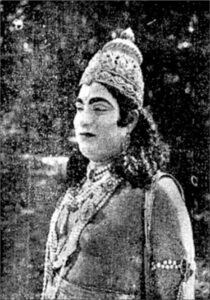
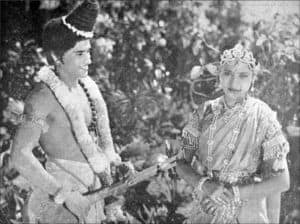
Karthikeya Films
Karthikeya Films was a studio established by Murugadoss, K. Ramnath and A.K. Shekhar under the banner Chandrakala Films. All three were working partners with M.V. Thiagarajan Chettiar as the owner. It was later renamed as Karthikeya Films.
K.V. Reddy started the studio at Bishop Garden in Adyar. The first film shot here was Sundaramoorthy Nayanar, which was released in 1937. The studio was later leased by Mureshwar and was renamed as Pragjyothi Studio. The films Abalai (1939), Kalamegam (1940), and College Kumari (1942) were shot in Prakjyothi Studios.
Kovai Central Studio
Kovai Central Studio started operations on January 25, 1937, at Trichy Road, Coimbatore at a cost of Rs. 16 lakhs. It was one of the largest studios in India with two floors and a lab. The management team comprised Sriramulu Naidu (B. Rangaswamy Naidu), Samikannu Vincent, and R.K. Ramakrishnan Chettiar, who was brother to the famous R.K. Shanmugam Chettiar. The first film shot here was the Telugu Tukaram. The Tamil version of Tukaram was released in March 1937. It was here that B.N. Rao and T.C. Vadivelu Nayagar jointly directed Rambaiyin Kadhal (1937) which went on to become a huge hit.
G. Ramaseshan, who was experienced as the General Manager of Calcutta Aurora Films, played an important role in the studio.
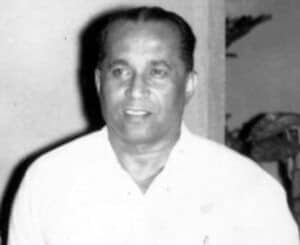
Newtone Studio
Newtone Studio operated from Kilpauk Garden near Kushaldas Garden. Cinematographer Jiten Banerjee (who had, by then, some amount of experience working with other studios), sound recordist Dinsha K. Tehrani, art director F. Nagore, actor M.K. Thiagaraja Bhagavathar, managing director R.M. Ramanathan Chettiar, L. Natarajan Chettiar, and A. Veerappa Chettiar were its partners. The studio appears to have been established on January 3, 1938.
Andhra Cinetone
Jeypore Raja, Kirlampudi Raja, Bobbili Raja, and P. Ramachandra Reddy established this studio at Vishakapatnam in 1937. A.M. Gopalaiyar was the General Manager. He had already worked as a manager at East India Film Studio in Calcutta. The Telugu and Hindi versions of the film Bhakta Jayadevar (1939) were shot at Andhra Cinetone. The team comprised sound recordist S. Chatterjee, cinematographer G. Singh, lab manager K. Roy, and managing agent Rao Bahadur Jagannatha Raju. The studio shut down in 1940.
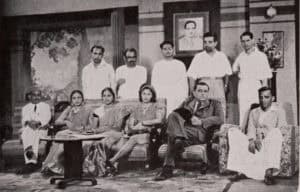
In addition to this, Travancore Studios appears to have been set up by Assandas in Travancore State in April 1938. Also, Mysore Sound Studios Limited was set up at Malleswaram in Bangalore, where films such as Naveena Nirupama (1937) and Mayurathvaja (1938) were shot.
A studio called Sri Durga Cinetone was also operating in Rajahmundry.
Kubera Films
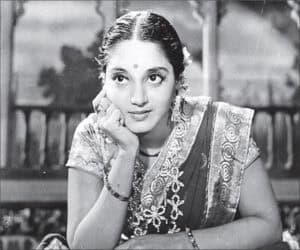
Venkaiah (not Raghupathi Venkaiah) was a very rich man from Nellore. Being an ardent fan of Telugu actress Kanchanamala, he established Kubera Films Limited with the rather niche purpose of producing films that starred the artiste. The office was located at 141, Poonamallee High Road and the studio was located at Landon’s Road, Kilpauk, Chennai. It was here that Telugu films such as Mahiravanan (1939) and Chandrasena were shot. However, he abandoned the studio as things did not work out as he had hoped.
The machinery and materials of Kubera Films was purchased to establish Navajyothi Films Studio in Mysore, whose shareholders were T. Janakiraman, O.R. Embaraiah, Bindu Madhavan and sound engineer Ramaswamy. Navajyothi Films Studio produced Kannada and Malayalam films.
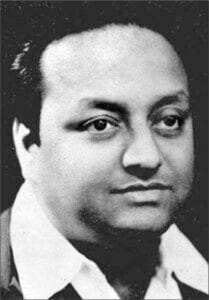
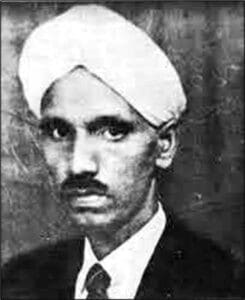
Kalidas Films
This studio belonged to the Erode-based company Kalidas Films Limited. The first film shot here was Kannappa Nayanar (1938). Bombay Mail (1939) was also shot here. There is written documentation that refers to the establishment as an ‘open space’ rather than a studio. The owner was Keshavlal Kalidas Seth, notably one of the producers of the film Menaka. The studio closed down within a year.
Jaya Films Studio
It appears that there was once a studio called Jaya Films which operated from Alwarpet, Chennai. It is clear from evidence that the 1939 films Vimochanam and Manmadha Vijayam were shot there.
The stories of film studios are akin to the stories of empires. When the Second World War erupted in September 1939, all the studios operating out of Chennai were closed. Some establishments migrated to other places. However, none of the studios that were begun in the 1930s exist today – they have transformed into commercial complexes, educational institutions and residential apartments. Only the main gate of Modern Theatres studio still stands on the road leading to Yercaud in Salem, a symbol of ancient glory as well as trepidation for the future.
With thanks to Theodore Baskaran; Randor Guy; P. Velmurugam, K. Sugeeth; RMRL; NFAI; the Indian Express archives; and Tamildigitallibrary.in